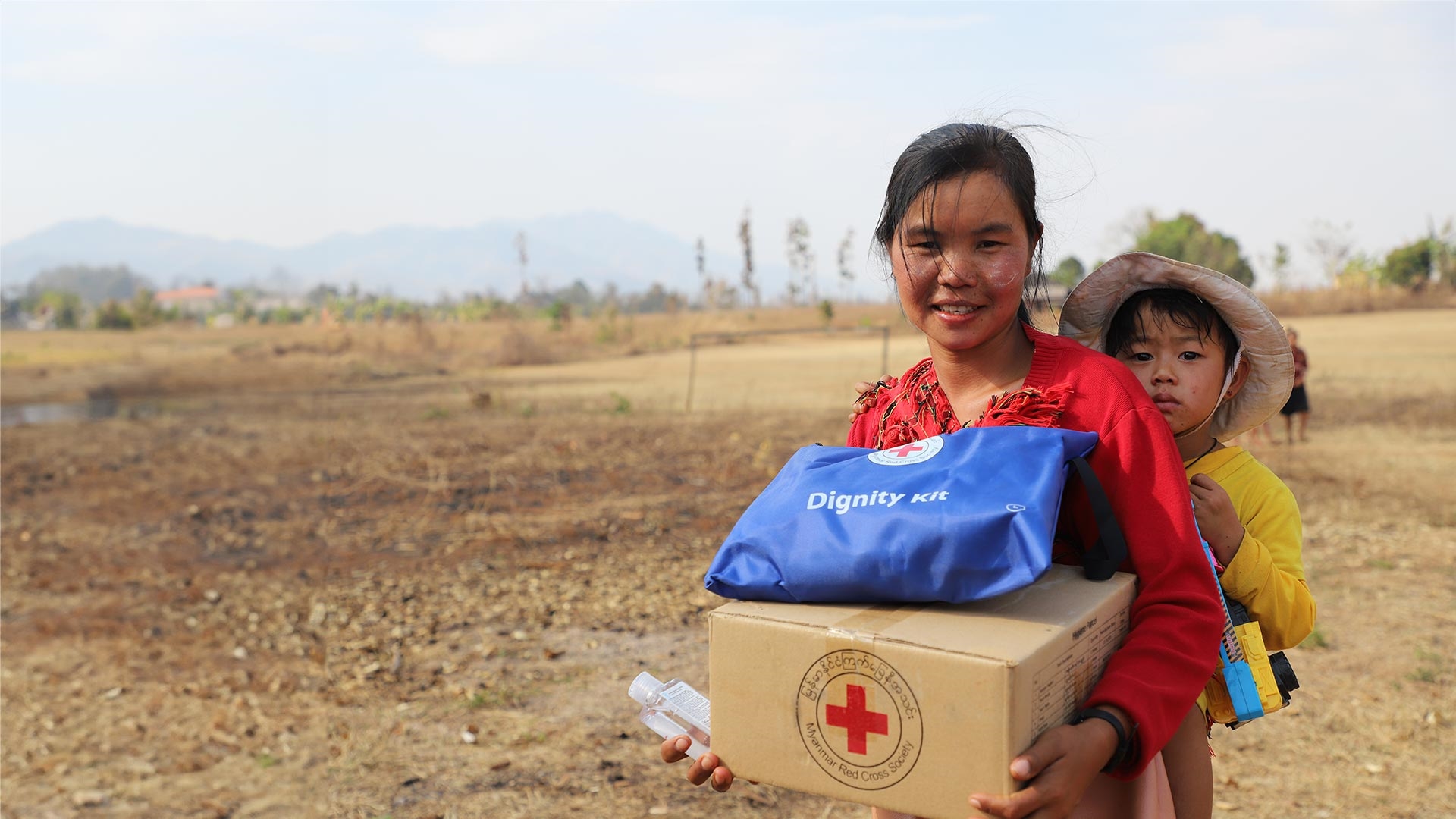Help in disasters, crises and conflicts overseas
- Overview- active step
- Your details
- Billing address
- Summary
- Payment

Payment details
By clicking "Donate", I certify that:
- I am at least 18 years old.
- I accept the terms and conditions.
- I understand that my personal information will be collected and used as set out in the Red Cross privacy policy and privacy collection notice.
- I understand I can access and change my personal information at anytime by calling Australian Red Cross at 1800 733 276 or via my.redcross.org.au
Each year, disasters caused by natural hazards affect more than 200 million people worldwide, while millions more are displaced by human-induced crises and emergencies.
We're part of the largest humanitarian network in the world, with a local presence in almost every country on earth. Our goal is to create stronger and more resilient communities with increased capacity to prepare for, anticipate, respond to, and recover from disasters and crises.
The Australian Red Cross International Disaster Fund is designed to ensure local Red Cross teams have the resources and capabilities they need to provide aid and support to communities experiencing crisis and disaster.
This year alone, we have seen a landslide in Papua New Guinea, floods in Afghanistan, cyclones in Bangladesh and the Philippines and worsening conflict in Sudan, Ukraine and the Middle East. All of these events are leading to untold human suffering and increasing humanitarian needs.
Your donation to the International Disaster Fund means that teams on the ground can be there before, during and after a disaster or crisis strikes to provide lifesaving support to impacted communities.
You have the power to make a difference

$65
can provide warm blankets for a family of five who are seeking shelter from a disaster or conflict

$85
can provide a shelter kit with tarpaulins, ropes and tools to help people put a temporary roof over their head after a disaster

$255
can provide an essential relief pack, with mosquito nets, jerry cans, buckets, hygiene kit, kitchen set, blankets, shelter tool kit and tarpaulins to give a family a new start after a disaster

$600
can give safety and security to 25 families in a refugee camp by providing 100 solar lanterns, as well as helping parents to cook at night and children to do homework
About the International Disaster Fund
Australian Red Cross provides funding to the following regional partners:
Indonesian Red Cross Society (Pelang Merah Indonesia)
Mongolian Red Cross Society
Myanmar Red Cross Society
Timor-Leste Red Cross Society (Cruz Vermelha de Timor Leste)
Fiji Red Cross Society
Papua New Guinea Red Cross Society
Solomon Islands Red Cross Society
Tonga Red Cross Society
Vanuatu Red Cross Society
The International Disaster Fund enables Australian Red Cross to support the lifesaving work of Red Cross and Red Crescent partners in countries affected by disasters, crises and conflict. This may include disaster preparedness, risk mitigation, emergency response and recovery activities.
From time to time, we may use the fund to respond to a specific disaster event for a set period of time. All donations made during that period will be directed to Red Cross’ work on that event.
Donations over $2 to the International Disaster Fund are tax-deductible in Australia. You will get a receipt in your name in an email when you donate online.
When the fund is used for a specific event, your donation is also tax deductible because it supports our work with countries classified as ‘developing countries’ for the purposes of the Overseas Aid Gift Deduction Scheme.
Australian Red Cross will not deduct more than 10 per cent of money raised to cover indirect essential costs such as receipting donations, IT costs, costs to send the money overseas and overheads. Any interest earned on donations will be invested back into the appeal.
We really appreciate the generosity but we’re unable to distribute donated goods, especially overseas. There are several good reasons for this. Every item has to be checked, cleaned, sorted, packed, transported, stored and distributed, which hugely increases the cost of the relief effort and diverts from work that may be needed on the ground.
When we provide relief supplies, they are carefully selected, packed for quick distribution and customs clearance, and checked to ensure they are what people really need.
Unwanted boxes of donated goods can clog ports and post offices and actually prevent the delivery of essential items like medicines and relief supplies.
The website DonateResponsibly.org has a great explanation of what can go wrong.
But if you have good-quality clothes or household items, our Red Cross Shops would gratefully accept them, to on-sell in Australia and raise funds for our vital work.
Red Cross will use the personal information you have provided for the primary purpose of processing your donation. If you agree to receive marketing materials from us about our work, we may also use this information to contact you. You can opt out or request amendments to the personal information at any time by emailing contactus@redcross.org.au or calling 1800 RED CROSS (733 276). We take your privacy seriously; you can refer to our privacy policy for more information.